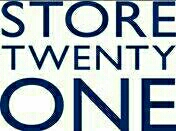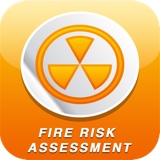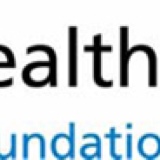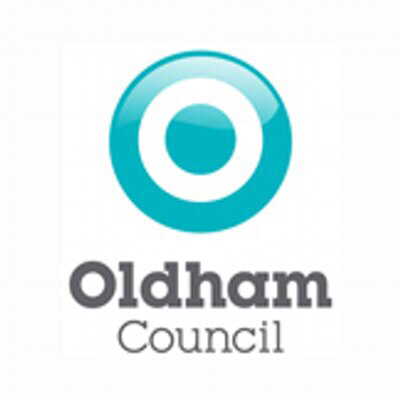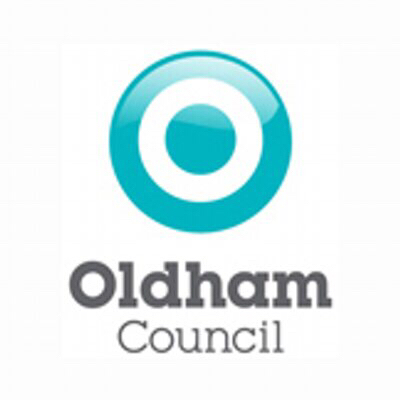Information
-
Audit Title
-
Document No.
-
Client / Site
-
Image of building
-
Conducted on
-
Prepared by
-
Location
-
Personnel
Part 1: GENERAL INFORMATION
RESPONSIBLE PERSON
-
Name of the responsible person or persons
-
Contact details of responsible person or persons
1 The Building
-
Building name
-
Number of Floors
- 1
- 2
- 3
- 4
- 5
- 6
- 7
- 8
- 9
- 10
-
Floor area: (m2 total)
-
Floor area: (m2 per floor)
-
Brief details of construction:
-
Occupancy type:
2 The occupants
-
Maximum number of occupants:
-
Maximum number of occupants at any given time:
-
Maximum number of members of the public at one time:
3 Occupants at special risk
-
Are there disabled occupants or disabled staff?
-
Are there occupants in remote areas?
-
Are there lone workers?
4 Previous Fire Information
-
Is there any previous history of fire occurring in the premises (if yes give details)
5 Other relevant background
-
Are there any residential or other commercial properties in or attached to the building
-
Is there a prohibition notice in force? (if yes give date of issue)
-
Is there an enforcement notice in force? (if yes give date of issue and date of when work is to be completed by)
-
Is there an alteration notice in force? (if yes give date of issue)
Part 2: SOURCES OF IGNITION
6 Electrical
-
Fixed wiring checked by competent persons and certificates available?
-
All portable equipment checked and certificates available?
-
Is there a suitable limitation on the use of trailing leads and adapters?
-
Is there a policy in place for non use of personnel electrical items?
-
Is there a procedure in place for faulty electrical equipment? (If yes, give details)
-
Comments and hazards observed:
-
Take picture of any hazards:
7 Smoking
-
Are reasonable measures taken to prevent fires as a result of smoking?
-
Is smoking prohibited in the building?
-
Are their suitable arrangements made for those who wish to smoke?
-
Is smoking waste disposed of sensibly and not with general waste?
-
Are metal containers or ashtrays provided within the smoking areas?
-
Is the appropriate smoking prohibition notices displayed at the building's entrance?
-
Take a picture of signage
8 Arson
-
Does the basic security against arson appear reasonable?
-
Is there sufficient control of unnecessary ignition sources in close proximity to the building?
9 Portable heaters
-
Is the use of portable heaters avoided as far as reasonably practicable?
-
If portable heaters are used, are the more hazardous types (radiant bars and LPG) avoided?
-
If portable heaters are used are suitable measures taken to minimise the risk of ignition of combustible materials?
10 Cooking facilities
-
Are reasonable measures taken to prevent cooking fires?
-
Are suitable extinguishers available?
11 Lightning
13 Housekeeping
-
Is the standard of housekeeping adequate?
-
Are combustible materials stored appropriately?
-
Are combustible materials separated from ignition sources?
-
Is the unnecessary accumulation of combustibles and waste avoided?
-
Is there appropriate storage of hazardous materials?
12 Ventilation and Machinery
-
Is all ventilation subject to routine maintenance?
-
Does the ventilation equipment switch off when the fire alarm activates?
-
Is all machinery subject to routine maintenance by competent persons?
-
Is there any equipment or machinery would give rise excessive amounts of friction?
-
List other ignition sources:
14 Hazards introduced by contractors and general building works
-
Is there sufficient control over works by contractors (e.g. Permits to work & hot works permits)?
-
Are there arrangements for the safe storage of gas bottles?
-
Are there arrangements for the safe storage hazardous materials?
-
Are fire safety evacuation procedures and instructions communicated to contractors?
15 Dangerous Substances
-
Are dangerous substances present on the premises?
-
Has the risk to relevant persons been adequately eliminated or reduced?
Part 3: FIRE PROTECTION MEASURES
16 Means of escape
-
Is the building provided with adequate means of escape in case of fire?
-
Are there sufficient exits? ( please state how many)
-
Are escape routes clearly signed?
-
Are exits easily and immediately openable where necessary?
-
Do fire exits open in the direction of travel where necessary?
-
Have sliding or revolving doors been avoided as fire exits?
-
Are there adequate means of securing exits?
-
Are there reasonable distances of travel where there is a single direction of travel?
-
Are there reasonable distances of travel where there are alternative means of escape?
-
Are escape routes adequately protected?
-
Are there suitable fire precautions for all inner rooms?
-
Are escape routes unobstructed?( if no take picture)
-
Take picture of obstruction
-
Are there suitable means of escape for disabled occupants and disabled staff?
17 Measures to limit fire spread and development.
-
Is there a sufficient standard of compartmentation and sub-compartmentation?
-
Are linings that promote fire spread avoided as far as reasonably practicable?
-
Does extraction and supply plant shut down on fire alarm evacuation?
-
Are fire doors inspected on a regular basis and is there documentation?
-
Do all Final fire exits have the final exit sign off sheet and is it signed off?
-
Add media
18 Escape lighting
-
Is there a reasonable standard of escape lighting provided?
-
Is this tested regularly and is documentation available?
19 Fire safety signs and notices
-
Are fire safety signs and notices suitable and sufficient?
-
Are evacuation routes and procedures displayed on the SOE H&S board?
20 Means of giving warning in the event of fire
-
Is a manually operated electrical fire alarm system provided?
-
Is automatic fire detection provided?
-
Is there remote transmission of alarm signals to the fire brigade?
21 Manual fire extinguishing appliances
-
Is there suitable and sufficient provision of portable fire extinguishers?
22 Type and make and model of Fire Alarm system
-
Type of system:
-
Comments and observations:
23 Facilities, equipment and devices for the protection of Fire-Fighters
-
Types of facilities:
-
Add media
-
Comments and observations:
Part 4: MANAGEMENT OF FIRE SAFETY
24 Procedures and arrangements
-
Person responsible for overall fire safety:
-
Are there competent persons available to assist in implementing fire safety arrangements?
-
Are appropriate fire procedures in place? (including arrangements for calling the fire service)
-
Fire Emergency Plan in place and details recorded?
-
Does the plan take account of other Fire Emergency Plans applicable in the building?
-
Is the Fire Emergency Plan readily available for staff to read?
-
Is the Fire Emergency Plan available to the enforcing authority?
-
Are there persons nominated to respond to fire?
-
Are persons nominated to assist with evacuation?
-
Is there appropriate liaison with the fire service?
-
Do routine in-house inspections of fire precautions take place?
-
Date of last store inspection
25 Training and drills
-
Are staff given instruction on induction?
-
Do staff receive periodic refresher training at suitable intervals?
-
Are staff with special responsibilities given appropriate training?
-
Are fire drills carried out at appropriate intervals?(if yes give date of last drill carried out)
26 Testing and maintenance
-
Is the plant and machinery adequately maintained? (Give details of last service on equipment and plant)
-
Is there weekly testing and periodic servicing of the fire detection and alarm system? (Give details of last service)
-
Is there monthly, six-monthly and annual testing of the emergency lighting? ( give details of last tests)
-
Is there annual maintenance and testing of fire extinguishing equipment?(give details of last service)
-
Is there annual inspection and test of the lightning protection system?( give details of last service)
-
Is there six monthly testing of wet/dry risers?( give date of last service)
-
Is there weekly testing and periodic inspection of sprinkler installations?(give details of last service)
-
Is there regular checks done on riser cupboard doors?(if yes give details of last check)
-
Is there routine checks of final exit doors? ( give details of last check)
-
Is there routine checks of fire doors? ( give details of last check)
-
Is there routine checks and maintenance done on the refuge alarm system?( if yes give details of last check or test)
-
Is there routine checks made of the automatic fire doors?(give details of last check)
-
Is there routine testing carried out on fire shutters? ( if yes give details of last check)
-
Other relevant inspection and test
27 Records
-
Are there records of fire drills?
-
Are there records of fire training?
-
Are there records of fire alarm tests?
-
Are there records of emergency lighting tests?
-
Are there records of maintenance and testing of other fire protection systems?
Part 5: RISK RATING AND RECOMMENDATIONS
Risk Items identified
-
Item 1
-
Probability (likelihood of fire)
-
Consequence (impact on life safety)
-
Risk rating score (probability x consequence)
- 1
- 2
- 3
- 4
- 5
- 6
- 7
- 8
- 9
- 10
- 11
- 12
- 13
- 14
- 15
- 16
- 17
- 18
- 19
- 20
- 21
- 22
- 23
- 24
- 25
-
Recommendations
-
Action
-
Item 2
-
Probability (likelihood of fire)
-
Consequence (impact on life safety)
-
Risk rating score (probability x consequence)
- 1
- 2
- 3
- 4
- 5
- 6
- 7
- 8
- 9
- 10
- 11
- 12
- 13
- 14
- 15
- 16
- 17
- 18
- 19
- 20
- 21
- 22
- 23
- 24
- 25
-
Recommendations
-
Action
-
Item 3
-
Probability (likelihood of fire)
-
Consequence (impact on life safety)
-
Risk rating score (probability x consequence)
- 1
- 2
- 3
- 4
- 5
- 6
- 7
- 8
- 9
- 10
- 11
- 12
- 13
- 14
- 15
- 16
- 17
- 18
- 19
- 20
- 21
- 22
- 23
- 24
- 25
-
Recommendations
-
Action
-
Item 4
-
Probability (likelihood of fire)
-
Consequence (impact on life safety)
-
Risk rating score (probability x consequence)
- 1
- 2
- 3
- 4
- 5
- 6
- 7
- 8
- 9
- 10
- 11
- 12
- 13
- 14
- 15
- 16
- 17
- 18
- 19
- 20
- 21
- 22
- 23
- 24
- 25
-
Recommendations
-
Action
-
Item 5
-
Probability (likelihood of fire)
-
Consequence (impact on life safety)
-
Risk rating score (probability x consequence)
- 1
- 2
- 3
- 4
- 5
- 6
- 7
- 8
- 9
- 10
- 11
- 12
- 13
- 14
- 15
- 16
- 17
- 18
- 19
- 20
- 21
- 22
- 23
- 24
- 25
-
Recommendations
-
Action
-
Item 6
-
Probability (likelihood of fire)
-
Consequence (impact on life safety)
-
Risk rating score (probability x consequence)
- 1
- 2
- 3
- 4
- 5
- 6
- 7
- 8
- 9
- 10
- 11
- 12
- 13
- 14
- 15
- 16
- 17
- 18
- 19
- 20
- 21
- 22
- 23
- 24
- 25
-
Recommendations
-
Action
-
Item 7
-
Probability (likelihood of fire)
-
Consequence (impact on life safety)
-
Risk rating score (probability x consequence)
- 1
- 2
- 3
- 4
- 5
- 6
- 7
- 8
- 9
- 10
- 11
- 12
- 13
- 14
- 15
- 16
- 17
- 18
- 19
- 20
- 21
- 22
- 23
- 24
- 25
-
Recommendations
-
Action
-
Item 8
-
Probability (likelihood of fire)
-
Consequence (impact on life safety)
-
Risk rating score (probability x consequence)
- 1
- 2
- 3
- 4
- 5
- 6
- 7
- 8
- 9
- 10
- 11
- 12
- 13
- 14
- 15
- 16
- 17
- 18
- 19
- 20
- 21
- 22
- 23
- 24
- 25
-
Recommendations
-
Action
-
Item 9
-
Probability (likelihood of fire)
-
Consequence (impact on life safety)
-
Risk rating score (probability x consequence)
- 1
- 2
- 3
- 4
- 5
- 6
- 7
- 8
- 9
- 10
- 11
- 12
- 13
- 14
- 15
- 16
- 17
- 18
- 19
- 20
- 21
- 22
- 23
- 24
- 25
-
Recommendations
-
Action
-
Item 10
-
Probability (likelihood of fire)
-
Consequence (impact on life safety)
-
Risk rating score (probability x consequence)
- 1
- 2
- 3
- 4
- 5
- 6
- 7
- 8
- 9
- 10
- 11
- 12
- 13
- 14
- 15
- 16
- 17
- 18
- 19
- 20
- 21
- 22
- 23
- 24
- 25
-
Recommendations
-
Action
-
Received by responsible person / representative
-
Assessor Signature
-
Pictures
Re-Assessment
-
Date for re-assessment
